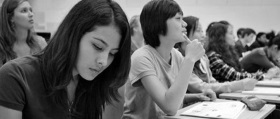Human Anatomy And Physiology
Human anatomy is the study of the human body structural features and is subdivided into histology and gross anatomy. Gross anatomy entails the study structures that are seen through the naked eyes. On the other hand, microscopic anatomy encompasses the use of the microscope to explore the minute anatomical structure and is the histology field that studies the structure of tissues from cell biology to organs.
Human physiology refers the study human bodily functions in good health, the cell and their organs of which they are composed. Most human physiology aspects are closely homologous to corresponding of animal experimentation and physiology has offered much of foundation of physiological knowledge.
Anatomy, Biochemistry (the study of living structures chemistry) and human physiology are complementary basic medical sciences, which are primarily taught together to students pursuing medicine.
Significance of human anatomy and physiology
Excellent mastery of the knowledge on the human physiology and anatomy forms the basis of all medicine. Without knowing how the body is made up, how it can go wrong and how it works, we cannot even design the effective interventions and treatments, including new pharmaceutical drugs and surgery. Learning physiology and anatomy well mean that you know the general basics of medicine. The disease is a deviation from normalcy, and if you understand the normal function (physiology) and structure (anatomy) it is very easy to realise the origin of the problem.
Cellular functions results from chemical changes and the bodily functions depend on these cellular functions. In addition, anatomy helps in understanding the human body part structures. And the physiology study helps to know the functions of those parts that aid the organism in its action performance. Understanding human anatomy helps is discovering bodily malfunctions thus facilitating their correction.
Human nervous system anatomy and physiology
Human nervous system is a system that collects and transmits stimuli received from sensory receptors to the spinal cord and the brain and transmits feedback impulses back to the body parts. Humans being among the higher vertebrates, their nervous system consist of two crucial parts; the PNS and the CNS. The peripheral nervous system consists of the nervous that originates from the spinal cord at the tributaries as well as the various level of the spinal column. The autonomic nervous system is branched into parasympathetic and sympathetic nervous system is also considered part of PNS and it controls the body’s non-voluntary (vegetative) functions.
Writing guides
- Online statistics homework help
- What is a good scolarship paper?
- Buying a custom essay
- Creating a 5-paragraph paper
- 25 high school persuasive writing ideas
- A comparative essay on world history
- Vaccines essay sample
- Topics on national honor society
- Finding a perfect college sample
- Driverless Cars essay example
- Creating a topic on plasctic surgery
- Truth about essay writing help
- How to buy essays online: safe ways
- Buying a paper without scam
- A descriptive paper about Venice
- Rules of using writing services
- Essay writers for hire
- How to write better: tips for 4th grade
- Writing examples about a person
- Human Anatomy & Physiology essay
- Writing a rhetorical analysis essay
- Getting a sample on The Godfather
Writing help
Stuck with your essay? Buy essay online and forgot about writing headache.
Write your essay by yourself! Don't buy essays, use writing guides.


